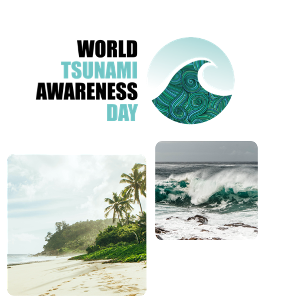
While the risk of tsunamis is relatively low in the Canberra region, many residents visit the south coast where tsunamis are a potential hazard. That's why it's important to understand and be aware of what to do if you feel, see, or hear a tsunami when travelling in these regions.
As the lead agency for storm and flood, ACT State Emergency Service Volunteers are equipped to support nearby communities should the need arise.
World Tsunami Awareness Day is designed to call on international communities to band together and raise awareness of the risk of Tsunami’s and provide innovative approaches to minimise hazard reduction.
In Australia, the Australian Bureau of Meteorology (BOM) and Geoscience Australia have developed an effective warning system known as the Joint Australian Tsunami Warning Centre (JATWC), to enable informed decisions and ensure the safety of communities with at least 90-minute warning signals before the arrival of the first wave.
The JATWC provides warnings that identify not only affected coastal regions in Australia, but also whether a tsunami has the potential to cause either Marine Threat or Land Inundation Threats. A Marine Threat Warning is confined to dangerous rips and currents and some localised overflow onto the immediate foreshores. For this threat level, individuals must get out of the water and move away from the immediate foreshore. A Land Inundation Threat Level Warning has the potential to cause inundation to low-lying areas with the need for a major evacuation. For this threat level, individuals must go to higher ground or move inland for safety.
As we move into the summer season and begin to visit the coastal regions of Australia, it is always important to educate and identify the early signs and potential impacts of tsunamis.




